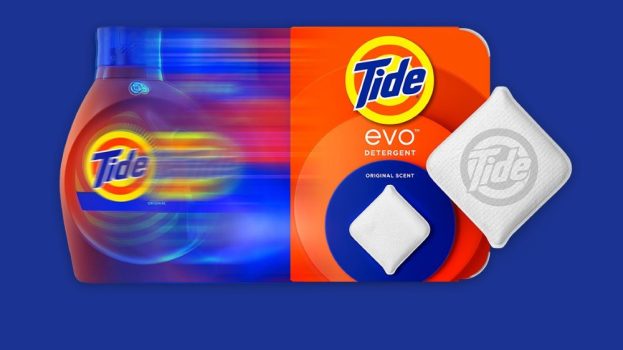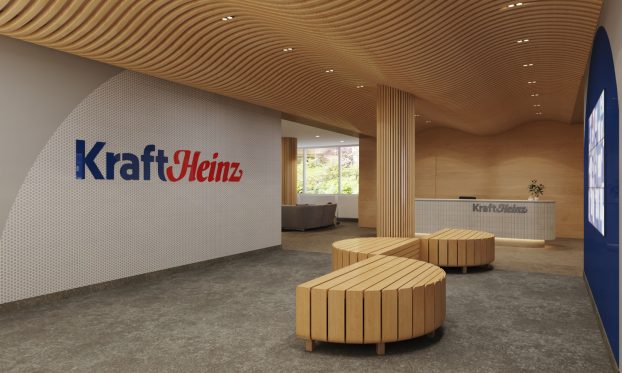The majority of Canadians probably don’t realize that homegrown talent Karim Rashid is the brainchild behind the Garbo trash can that has been all the rage the last few years, but that doesn’t mean they don’t have a penchant for design. One need only check out the number of design-related North American titles at the nearest Indigo for proof that it has become an explosive topic in this country.
Many Canadian firms and retailers are hoping to capitalize on this enthusiasm by serving up nifty household merchandise for consumers. But unlike in previous years where the demographic bulls-eye was the exclusive, boutique-browsing set, these days the focus is also the mainstream crowd, including those who prefer to shop at the Wal-Marts of the world.
Last month the Toronto-based Design Exchange (DX), a not-for-profit national organization, announced a new licensing agreement with Carte Blanche Licensing, also of Toronto, to produce a line of DX-branded homes items targeted at mass and specialty retailers.
Lynda Friendly, president and COO of DX, says the initiative is timely, as the Canadian consciousness has finally come to appreciate ‘function, value and design,’ as their American and European cousins have done before them.
‘All you need to do is look at the daily newspapers as each one has a page on design every week or on TV where there are many design programs,’ says Friendly, who points out that the emergence of the global village – in other words, the ability to see how other cultures live – plus accessibility on the Web, has helped fuel the trend.
The DX line, likely to debut in 2003, will include Canadian-made linens, bed, bath and kitchen products; each item will be endorsed by a committee of design professionals. Friendly says the goal is to heighten awareness of DX, as well as innovative product.
‘We want to encourage consumers to seek out and appreciate design and educate Canadians about what is good design,’ she says, adding that marketing efforts will be launched in conjunction with the collection, probably via a joint relationship with retail partners. ‘You can have the best product but if you don’t market it properly, it will sit on the shelf.’
She also believes Canadian big box chains are clueing in to the phenomenon, particularly after witnessing Target’s success south of the border with its exclusive Philippe Starck and Michael Graves offerings. ‘I do think retailers here are working on it,’ she says. ‘It would be a great marketing idea for them to do a week-long celebration of Canadian design.’
Hudson’s Bay Company is one firm that assumes the passion will continue to blossom. By the end of 2002, it plans to have established 38 of its kitchen, bed and bath superstores Home Outfitters across Canada, an increase of 16 for the three-year-old banner.
‘We’re seeing people knocking down walls and creating more openness within their living environments, and we see them personalizing their space more,’ says Bill Morrison, who is GM at Home Outfitters. ‘A top trend customers think they’ll be doing this fall is dinner parties.’
Recent studies support Morrison’s theories. According to an Ipsos-Reid poll conducted last winter, which surveyed 1,000 people, 76% of Canadians feel an emotional attachment to their homes and 55% say it has become more important to them because of recent worldwide events. Ninety-six per cent said they take personal pride in their pads.
Meanwhile, a report published by Royal Bank Canada last February, indicated that 27% of all Canadians had planned to renovate their homes in the next twelve months. Of them, 28% reported they would do so mainly for esthetic, as opposed to structural reasons.
Home Outfitters’ marketing tagline is ‘live better, spend less’; the essence is that shoppers don’t have to spend a lot for unique merchandise. The campaign includes TV, radio and a print ad that recently ran in Maclean’s pushing kitchenware.
Morrison also implies exclusive deals with a designer or two are in the works. ‘There’s a lot of work under process, but it would be premature to announce [anything],’ he says, adding that the company is looking for ‘edgy’ items.
‘Retailers have to be interesting and certainly we think that fresh design would achieve this.’ While the stores carry tried-and-true North American brands, he adds, HBC Outfitters has also purchased pieces from smaller Canadian manufacturers, like Vancouver-based Amisco, creator of furniture accent pieces. He says this tactic helps the stores avoid becoming ‘boring.’
That bodes well for Craig Alun Smith, principal and head designer of Winnipeg-based Plastic Buddha, who is currently developing merchandise intended for big-box stores. Called Bi, the new collection will be based on packaging as product, which customers can somehow reuse.
‘It’s great to design a coffee table that costs $1,800, but how many would I sell?’ he asks. ‘I would be stupid to concentrate on boutiques because sales volume is low. Sept. 11 woke me up to the point that we have to move up.’ And Smith says there isn’t any risk to moving toward mass: ‘I believe it’s not necessarily diluting or diversifying because everything we do is an element of design.’
However, Smith admits his two-year-old enterprise initially encountered difficulties grabbing the attention of Canadian retailers. In fact the original plan was to focus on Canada for two years, but that changed when Smith didn’t make a single sale domestically in the firm’s first year.
‘We have had more success in the U.S.,’ he says, adding that his designs are stocked by independent retailers in large cities south of the border. ‘We get a lot of Canadians calling us, wanting to buy direct. But retailers in Canada are a bit more skittish; if they’re going to buy a product to resell, they’re looking for a track record of sales.’
Smith has relied on his ‘radically different’ style – like a curved vase that changes its shape when you add water – to market itself, mainly because, like other Canadian designers, he is limited financially. However, he believes chains will come around, and when they do, he hopes to benefit from their marketing dollars.
‘I think Bi would need marketing behind it,’ he admits, adding, ‘I would love to work with Canadian Tire. I think it’s the perfect Canadian company to use designers to help boost sales.’ (Canadian Tire launched its own design-oriented kitchenware collection, Persona, in May.)
Toronto-based Umbra, the Canadian design success story, has already benefited from its relationships with specialty retailers in the U.S. like Pottery Barn, Crate & Barrel and Bath and Beyond.
‘What’s happened is that these chains have grown, and we’ve grown along with them,’ says Les Mandelbaum, president of Umbra. ‘In the fashion industry, chains emerged as being able to deliver consistency and price in the ’80s. That has happened to home design in the ’00s.’ Mandelbaum says this development is attributable to baby boomers becoming homeowners in the intervening years.
Like other firms, advertising hasn’t been a priority for Umbra, although in the past it has invested in print ads in U.S. glossies like Vogue and Elle Décor, as well as a New York billboard effort. ‘In terms of traditional brand building, we spend so much on product development, it’s difficult to do international ad campaigns,’ says Mandelbaum. ‘It’s hard to keep up on a regular basis, but I would look at advertising again in the future.’
While Mandelbaum agrees there is augmented interest in stylish products for the home among Canadians and mass retailers alike, he questions whether a chain like Zellers can mirror the success of Target south of the border.
‘Zellers has definitely looked carefully at how Target has competed with Wal-Mart and how they’ve used design to set themselves apart. But does Zellers have the right locations to make it work? They’re in certain neighbourhoods with position for mass, but not ‘mass with class.”
Certainly, Ikea hasn’t ventured far from metropolises in its 26 years on Canadian soil, and has no plans to do so, according to spokesperson Keka DasGupta. In fact, new supercentres will break ground in suburbs surrounding Vancouver, Toronto and Montreal this year, joining Ikea’s existing nine locations nationwide.
Still, DasGupta reports that the Scandinavian-based chain’s special-design collection, PS, which first launched in 1995, has been ‘incredibly popular’ in Canadian stores.
‘PS is an indicator that design has become so important for us in recent years,’ she adds. For the most recent PS line, Ikea asked 18 designers from various countries (no Canadians among them), to fashion goods that look high-end, but are affordable to the masses. A special twist was that the product had to be suitable for both indoors and outdoors.
But, aside from Ikea’s popular superstores, the company has a ‘shop-by-phone’ clientele that has tripled in size over the last six years, says DasGupta. ‘It shows us that there is a need for design right across Canada.’























